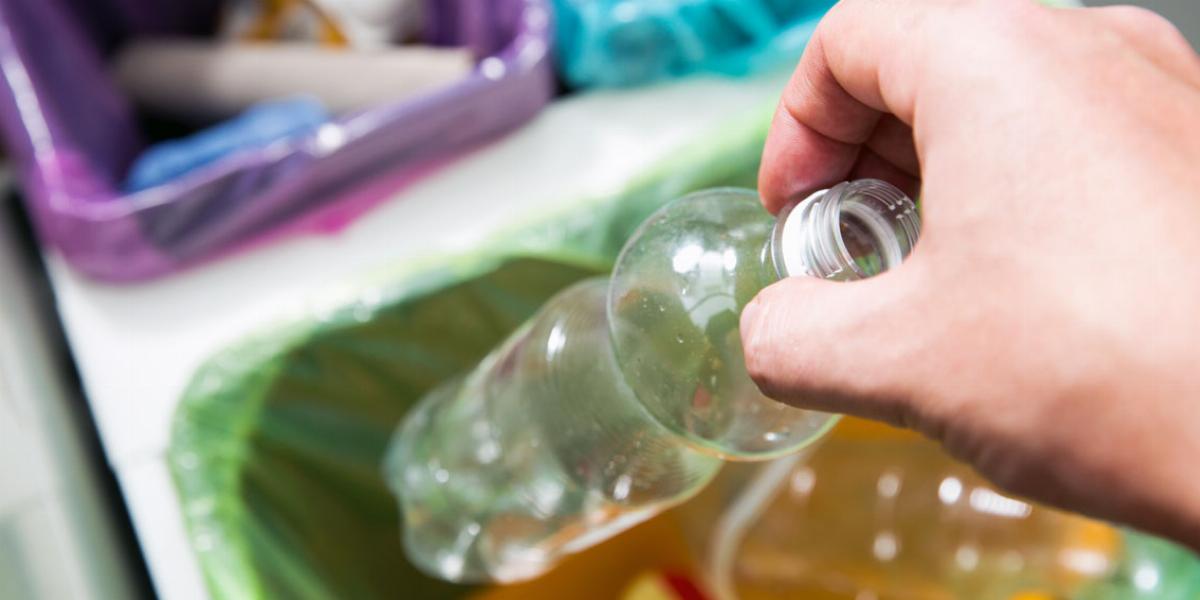
It sounds easy enough: throw all of your recyclable items into a blue bin to take out on recycling day. But what happens if a glass bottle breaks? Or you forgot to break down that greasy pizza box?
Single-stream recycling makes it simple for consumers to recycle. You no longer have to sort paper, plastic, cardboard and glass into separate containers to take to the curb. In theory, this should increase recycling and diversion rates. But the convenience comes at a cost. Confusion about what can and can’t be recycled along with contamination leads to issues at recovery facilities.

“Although mixed recycling (single-stream) isn’t ideal for the porous recyclables such as paper, cardboard and glass materials, it isn’t the reason for the crisis with recycling. Mixed recycling can work, when people are recycling properly. The greatest amount of contamination comes from ‘garbage’ being thrown in recycling bins in general.”
Mitch Hedlund | Executive Director, Recycle Across America
To sort out the pros and cons, we spoke to Mitch Hedlund from Recycle Across America and Kara Pochiro from the Association of Plastic Recyclers.
Single-stream is a recycling process that doesn’t require consumers to do any sorting. All recyclable items are placed in the same bin and mixed in the collection truck. These materials are later sorted out at a Materials Recovery Facility (MRF). This method is also called commingled or single-sort recycling.
While there may be restrictions in some areas, most programs accept the following items:
It’s always best to check with your city’s Public Works department or recycling company to learn exactly what’s recyclable in your area.
“Communities work with their MRF to determine what can be collected and sorted at their facility. The most common programs collect #1, 2 and 5 plastics, aluminum, steel, paper, cardboard and glass.”
Kara Pochiro | The Association of Plastic Recyclers
Once recyclables are placed in curbside bins, collection trucks bring the materials to the floor of an MRF. There, machines and employees divide all the materials into categories. Sorting methods can vary between different facilities, but conveyor belts, screens, forced air, magnets and scanners are all used to identify and group materials together.
Single-Stream Recycling Sorting Process:
While it’s convenient for consumers to toss everything in the same bin, the sorting process for single-stream recycling isn’t perfect. Machines and employees at recovery facilities can make mistakes and contamination is a rampant issue. The end result is often a lower-quality recycled product, and in some cases, a contaminated batch must be sent off to the dump.
“Single-stream recycling definitely leads to more material being collected, but there are issues with contamination. People are often confused about what exactly they should put in their cart, and if items are highly contaminated they can’t always be recycled. Package design is also an issue. Many packaging components can affect recyclability.”
Kara Pochiro | The Association of Plastic Recyclers
Advantages and Disadvantages of Single-Stream Recycling |
|
|---|---|
| Pros: | Cons: |
|
|
To help recycle right, Hedlund says to do the following:

“Most of the densely populated areas of the U.S. migrated to the mixed recycling (single-stream) system and now we have to live with it for a while. Therefore, it’s absolutely critical that we make it easy for the public to start recycling right.”
Mitch Hedlund | Executive Director, Recycle Across America
Although no system for recycling is perfect, single-stream has had major impacts on cities that have adopted it as part of their waste management plans. Some areas report seeing a 50 percent increase in recycling production after making the switch. If your city doesn’t offer single-stream recycling yet, keep an eye out for proposed plans. Until then, happy sorting!
Read our One-Stop Guide for Recycling Information to do your part to increase recycling rates and reduce contamination.
